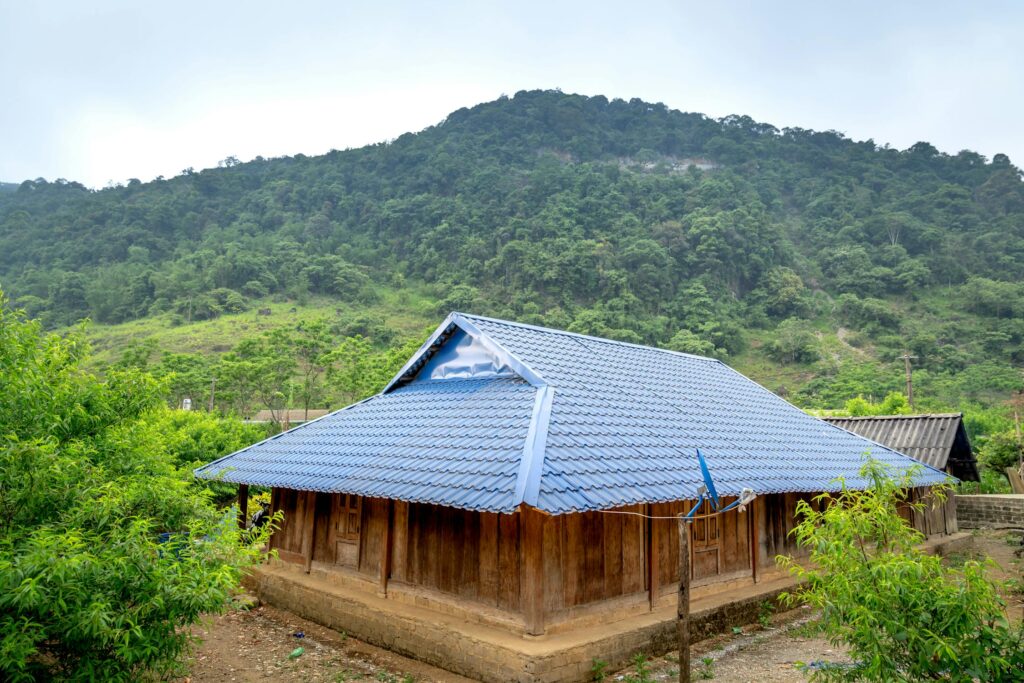
Property owners focus on durability, longevity, and safety when choosing roofing materials. In the last few years, metal roofing has become popular because of its benefits, including efficiency and resilience. In fire-prone areas, however, fire resistance is a primary concern. Here, we’ll determine whether metal roofs are fireproof or fire-resistant.
Terminology
In considering the fire resistance of Metal Roofing, it’s crucial to learn about associated terminology. The terms ‘fireproof’ and ‘fire-resistant’ are often used interchangeably, but there are a few differences. Fireproof materials offer a high level of protection because they don’t burn, while fire-resistant roofing may combust under certain conditions.
Metal Roofs are Non-Combustible
One of the biggest reasons for the popularity of metal roofing in fire-prone areas is that these materials are non-combustible. Unlike wood shingles and other traditional roofing materials, metal roofs don’t fuel fires. This characteristic makes them a fine choice for property owners seeking fire-safe roofing options.
Fire Resistance of Various Metal Roofing Materials
While all metal roofing is somewhat fire-resistant, it’s vital to note the differences between materials. Aluminum and steel are used in roofing, and they’re inherently resistant to combustion because of the high melting points of these metals.
Metal roofs often come with fire-resistant underlayments, which enhance their durability. The underlying layer is a barrier, preventing flames from damaging the building.
Choosing the Right Installation Method, Landscaping, and Accessories
The way metal roofing is installed has major effects on its fire resistance. A standing seam metal roof, for instance, is less likely to catch fire because of the way panels interlock. Fire mitigation doesn’t stop at the roof, and property owners should consider adding fire-resistant shutters, doors, and windows for comprehensive protection.
While metal roofing affects a building’s fire safety, ground-level defenses are equally important. A property owner’s landscaping choices, especially those immediately around the structure, make a big difference in fire resistance.
Fire Ratings: Why They Matter
Roofing materials are classified based on fire resistance, with Class A at the top. A Class A metal roof is effective against devastating fire exposure. Most metal roofs, including those made of aluminum or steel, receive Class A ratings, providing property owners in fire-prone areas with additional reassurance.
Class A ratings offer another benefit: lower insurance premiums. It’s best to contact your insurer before installing a metal roof, to discuss potential rate changes. Many customers are delighted to pay lower property insurance rates after installing metal roofs, and it’s always worth looking into.
Other Benefits of Metal Roofing
Fire resistance is just one of the many advantages of metal roofing. These roofs are valued for their longevity, low maintenance requirements, and durability. Metal roofs can endure the harshest conditions, resist corrosion, and reflect the sun’s rays, contributing to greater efficiency.
Metal Roofing Offers Substantial Protection
While no roofing materials are deemed completely fire-proof, metal roofs offer a high level of protection from fire hazards. The non-combustibility of metals, along with Class A fire resistance ratings, makes metal roofing a wise choice for property owners concerned about their safety.
Investing in metal roofing provides peace of mind and a long-lasting, durable solution for home and commercial building protection. As with other investments, property owners should consult local roofing professionals to ensure the best choices for their needs and location.


